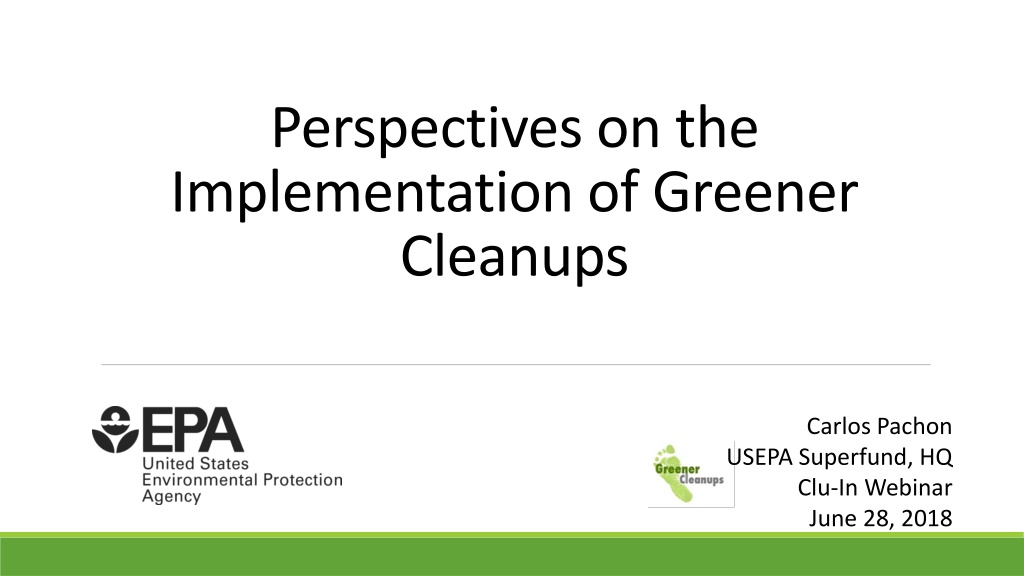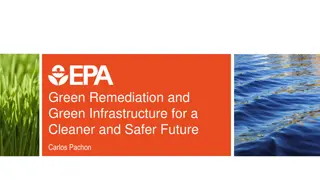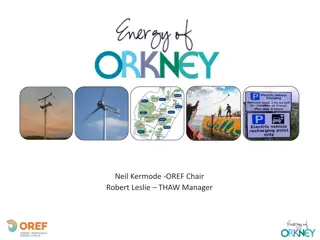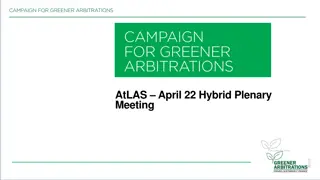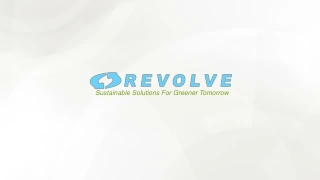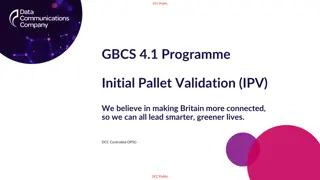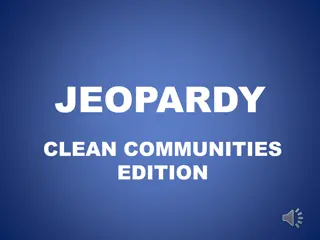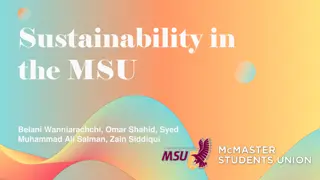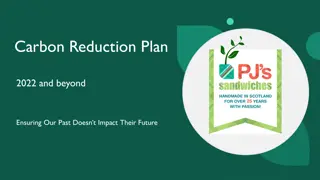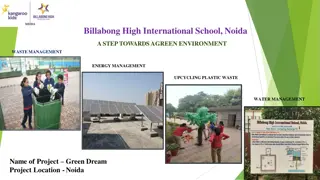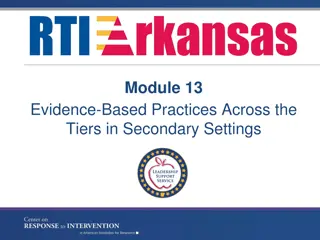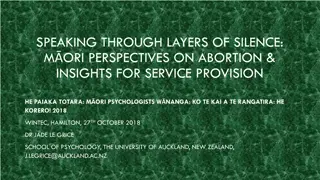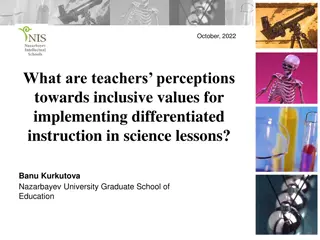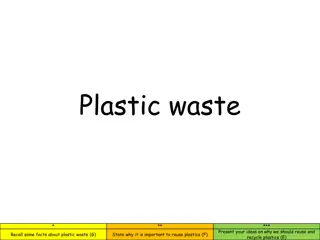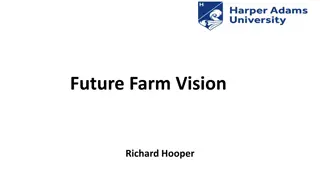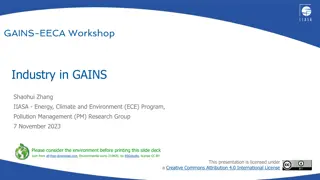Implementing Greener Cleanups - Perspectives and Best Practices
Explore the successful implementation of greener cleanups through case studies and practical strategies. Learn about the application of ASTM standards, best management practices, and the importance of sustainable practices in protecting human health and the environment.
Download Presentation

Please find below an Image/Link to download the presentation.
The content on the website is provided AS IS for your information and personal use only. It may not be sold, licensed, or shared on other websites without obtaining consent from the author. Download presentation by click this link. If you encounter any issues during the download, it is possible that the publisher has removed the file from their server.
E N D
Presentation Transcript
Perspectives on the Implementation of Greener Cleanups Carlos Pachon USEPA Superfund, HQ Clu-In Webinar June 28, 2018
Webinar Agenda USEPA Updates on Greener Cleanups. Carlos Pachon Award winning application of the ASTM Standard Guide for Greener Cleanups at Travis AFB. Lonnie Duke ASTM Greener Cleanups Self-Declaration at Marine Corps Base Camp Lejeune. Monica Fulkerson North Ridge Estates: Applying the ATSM Guide a USEPA Superfund Site. Linda Meyer & Sarah Babcock Implementing Greener Cleanups at a Portfolio Level. Geraldine Wolf Open discussion 2
Updates on Greener Cleanups Why Greener Cleanups? Greener cleanups build sustainable practices into our core mission: protect human health and the environment https://www.epa.gov/greenercleanups 3
Two Approaches: Same Endpoint Any Site Cleanup Objectives Apply BMPs Large/Complex Site Quantitative Evaluation Focus key activities Estimate impacts Identify hidden contributors 4
ASTMs Standard Guide for Greener Cleanups Supports the tenets of EPA s Greener Cleanup Principles Applicable to individual or multiple phases of a cleanup Identifies and employs best management practices BMPs Offers an option for a quantitative evaluation Promotes transparency through a robust reporting structure Compatible with all cleanup programs November 2013 5
Best Management Practice Process Particulate emissions may be important for a region in non- attainment Step 1: Opportunity Assessment The water footprint may be important in arid lands Step 2: BMP Prioritization Waste generation may be important for a community with concerns regarding landfill space Step 3: BMP Selection Step 4: BMP Implementation GHG emissions may be important to a municipality with GHG reduction goals Step 5: BMP Documentation 6
Common Themes Across Today s Case Studies Presentations by site owners, consultants, and regulators: We all have a chance to make a difference in footprint reductions The use of a protocol to identify and select footprint reduction opportunities and practices (3 projects used ASTM Guide) BMPs are often applied to reduce the environmental footprint of remedies in our existing portfolio We see footprint reductions across all core elements Team approach: No one person owns the footprint reduction 9/29/2024 U.S. ENVIRONMENTAL PROTECTION AGENCY 7
Forward Momentum: Policy, Tools & Practice Greener cleanups are consistent with Agency policy and authorities: Greener cleanups are consistent with the goals of EO13834 (May 17, 2018) The ASTM Standard Guide for Greener Cleanups is an effective tool for all parties at the project level EPA preparing to release updated SEFA footprint tool (summer 2018) EPA Superfund continues to advance greener cleanups (Optimization, Remedial Action Framework) Site cleanup consulting and engineering companies are increasingly incorporating greener cleanup practices into their standard operations 9/29/2024 U.S. ENVIRONMENTAL PROTECTION AGENCY 8
